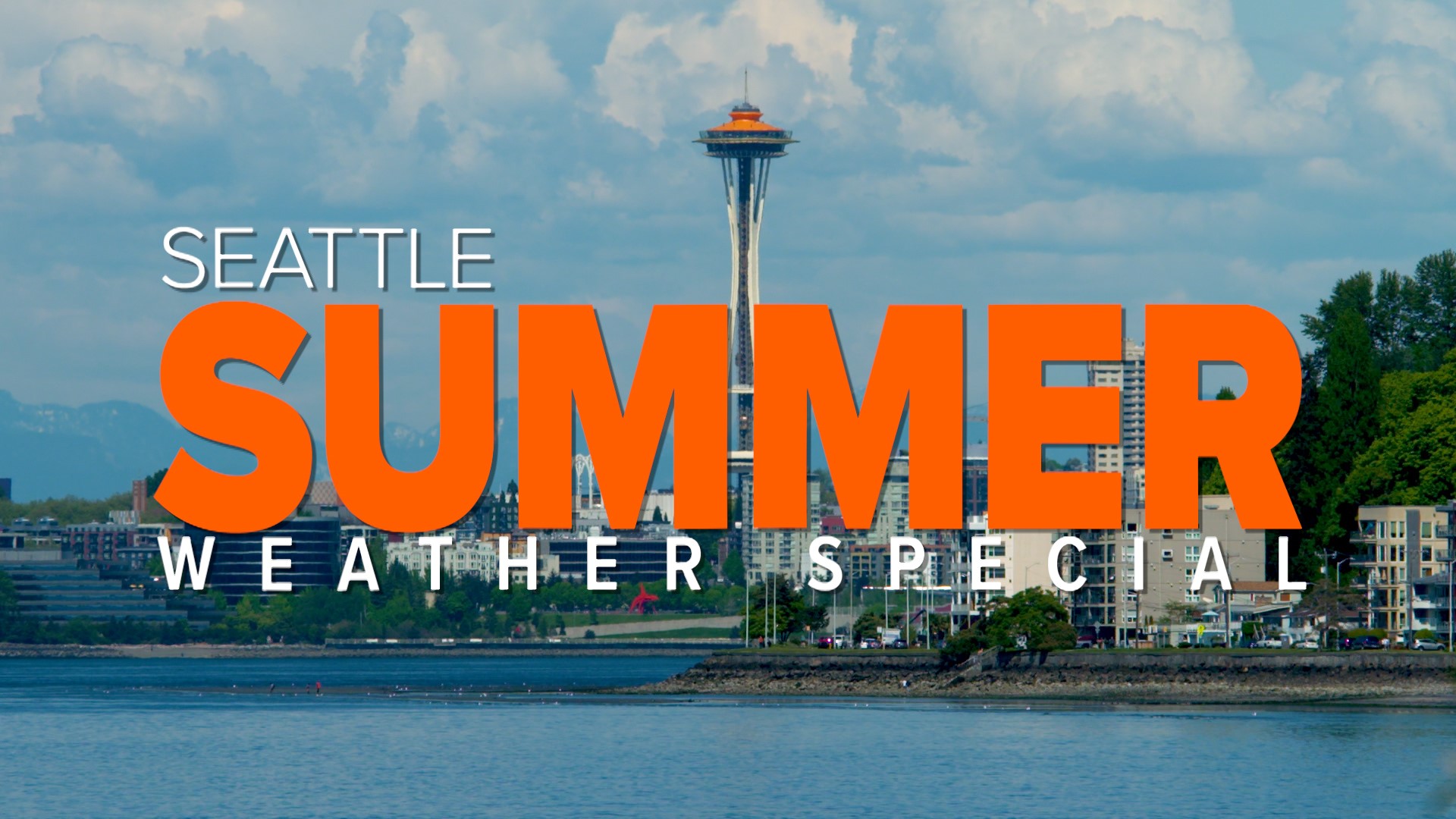SEATTLE — Over half of Seattle residents live in areas known as "urban heat islands" because they have temperatures as much as eight degrees higher than surrounding areas, according to a new report detailing the risk of extreme heat.
In a climate analysis from Climate Central, the researchers found that 525,989 Seattle residents were living in areas with an urban heat index (UHI) of over eight in 2020. The UHI measures how much hotter the area is due to the characteristics of its built environment. In other words, on a 95-degree day in rural Washington, people living in Seattle would experience temperatures of about 103 degrees.
The UHI is a measure of how much hotter these areas are due to characteristics of their built environment.
This means 54% of Seattle's population lives in urban heat islands susceptible to higher temperatures, according to the study. Another 19% of Seattle residents live in areas with UHI exceeding nine degrees, the fifth-highest rate in the nation. Only New York, San Francisco, Chicago and Washington D.C. have more people living in these heat-dense areas than Seattle.
Zoom out further and Seattle also has one of the highest populations living in urban heat islands that are 10 degrees hotter.
Why are cities hotter?
Broadly, researchers said paved roads, parking lots and buildings absorb and retain heat, radiating it back into the air. In some cases neighborhoods in a highly developed city can experience temperatures 15-20 degrees hotter than a less developed neighborhood, the researchers said in the study.
Cities are typically hotter than urban areas, the study found, because they have more human-created heat emissions and less vegetation to absorb heat, the shape and height of buildings impact airflow and trap heat further, miles of hard and dark surfaces absorb heat and tall buildings cause "narrow urban canyons," allowing warmer air to linger over cities.
Put it all together and these factors create the optimal breeding environment for extreme temperatures.
The risks of extreme heat and impacts
According to the National Weather Service, extreme heat is the leading cause of weather-related deaths over the past 30 years.
Researchers said extreme heat can trap pollutants in the atmosphere, exacerbating air pollution, and making it more dangerous for people to work outside.
And as the temperatures rise in Seattle it leads to increased demand for cooling. This strains the electrical grid and drives up energy costs, creating more greenhouse gas emissions to meet demand. In turn, this just compounds the extreme heat risk further.
Researchers found that low-income neighborhoods and communities of color are disproportionally impacted by extreme heat. Climate Central said neighborhoods with higher intensity urban heat islands were often the same ones that experienced race-based housing practices like redlining.
An interactive map created by the Science Museum of Virginia and Esri shows how redlining and heat exposure differ by neighborhood. Seattle's Capitol Hill neighborhood has an average land surface temperature of 2.4 degrees above the city's average, while 11% of households are below the poverty line, according to ArcGIS' mapping tool. The West Seattle neighborhood, on the other hand, is cooler than Seattle's average by about one degree while 5% of the households live below the poverty line.
Extreme heat solutions
Climate Central identified energy bill assistance, accessible information on places with working air conditioning and public alerts during heat events as short-term solutions to an emerging crisis.
Long-term solutions to the rising temperatures include planting trees along paved streets, incorporating rooftop gardens to form a protective vegetative layer, roofs made of reflective and emission materials, varying building heights to increase air circulation in cities, and substituting solar power for fossil fuels.

